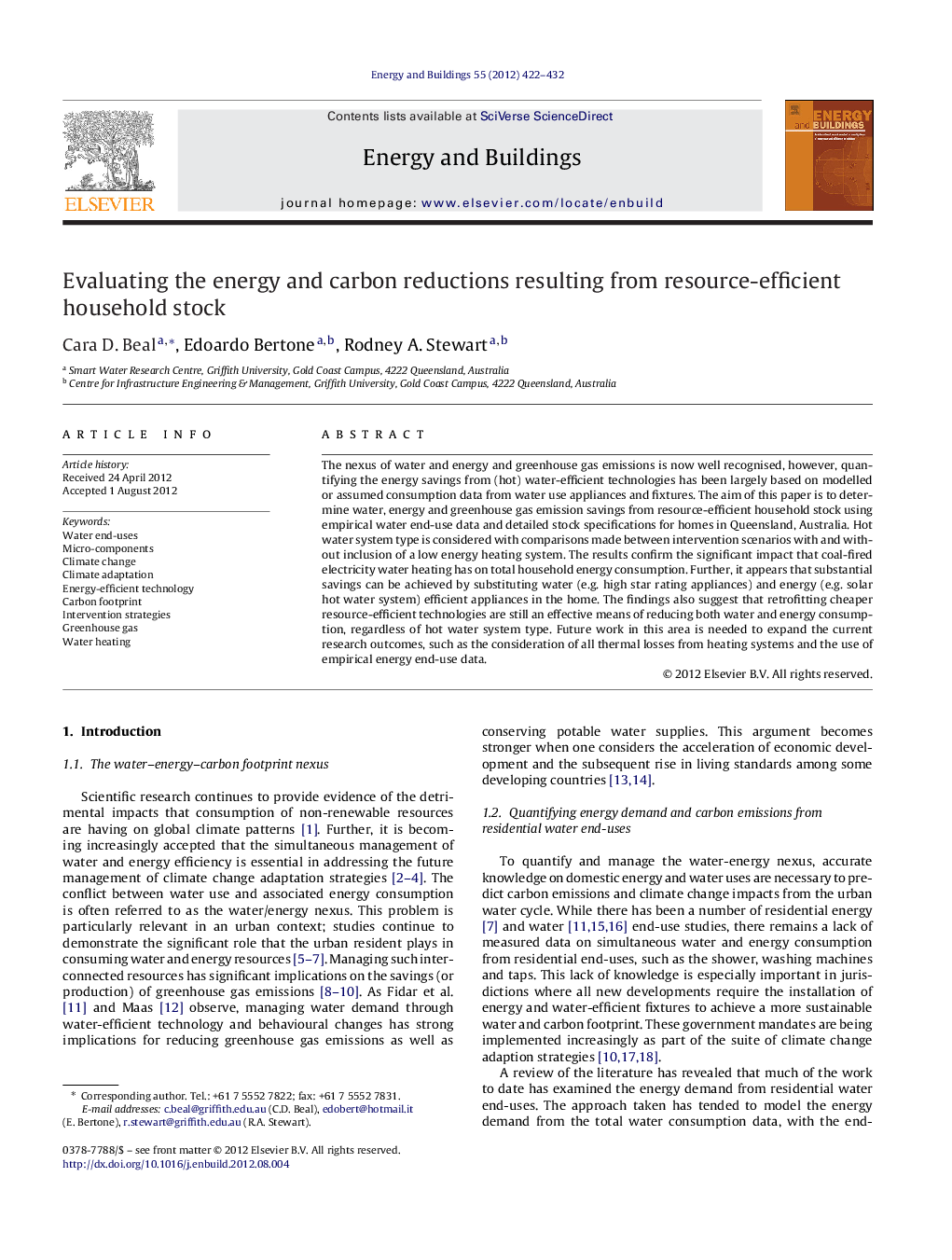| کد مقاله | کد نشریه | سال انتشار | مقاله انگلیسی | نسخه تمام متن |
|---|---|---|---|---|
| 263850 | 504085 | 2012 | 11 صفحه PDF | دانلود رایگان |

The nexus of water and energy and greenhouse gas emissions is now well recognised, however, quantifying the energy savings from (hot) water-efficient technologies has been largely based on modelled or assumed consumption data from water use appliances and fixtures. The aim of this paper is to determine water, energy and greenhouse gas emission savings from resource-efficient household stock using empirical water end-use data and detailed stock specifications for homes in Queensland, Australia. Hot water system type is considered with comparisons made between intervention scenarios with and without inclusion of a low energy heating system. The results confirm the significant impact that coal-fired electricity water heating has on total household energy consumption. Further, it appears that substantial savings can be achieved by substituting water (e.g. high star rating appliances) and energy (e.g. solar hot water system) efficient appliances in the home. The findings also suggest that retrofitting cheaper resource-efficient technologies are still an effective means of reducing both water and energy consumption, regardless of hot water system type. Future work in this area is needed to expand the current research outcomes, such as the consideration of all thermal losses from heating systems and the use of empirical energy end-use data.
► An empirical water end use dataset is used to model water-related energy from 211 homes.
► Energy demand and GHG emissions from different hot water systems (HWS) are also considered.
► The reductions in water, energy and GHG from various resource-efficient technologies are modelled.
► A savings of 46% can be achieved by substituting a (coal-fired) electric HWS with a solar HWS.
► Low flow shower heads and tap aerators are most effective in reducing both water and energy demand.
Journal: Energy and Buildings - Volume 55, December 2012, Pages 422–432